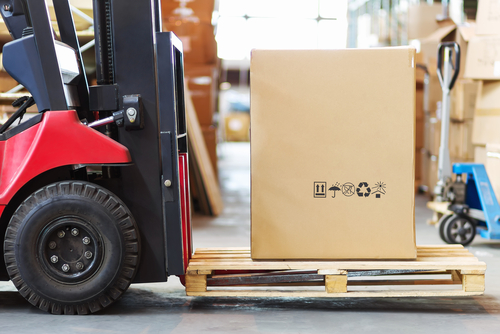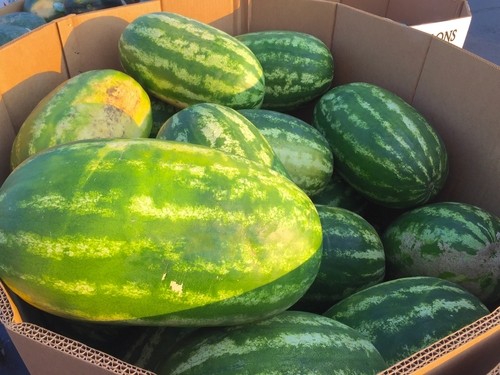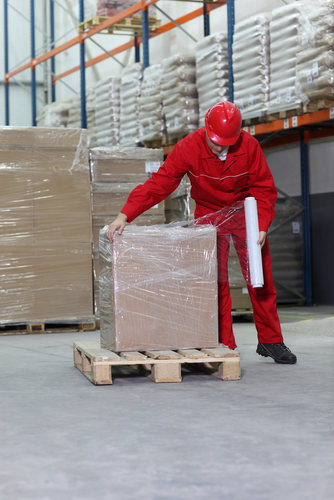In the shipping and warehousing industry, there’s an amazing variety of different types of containers. One of the most versatile is the Gaylord box. These boxes—sometimes referred to as bulk boxes, bulk bins, watermelon boxes, or pallet boxes—are oversized storage boxes that can be used for a wide range of shipping and storage applications. But, like any industrial container, Gaylord boxes are often underused. Here, we’ll help you learn how to get the most out of yours.
What is a Gaylord Box?
Gaylord boxes are oversized storage boxes that can be easily stacked on pallets. Unlike typical bulk boxes, Gaylord boxes are constructed from single-, double-, or triple-walled plastic or corrugated material. They get their name because the first manufacturer of this type of box was the Gaylord Container Company in St. Louis (which later became Crown Zellerbach). Despite the fact that these boxes once had a specific set of benefits and features, they now encompass a range of different boxes and containers.
However, traditionally speaking, Gaylord boxes refer to large, corrugated boxes. Many manufacturers now make infinite-use plastic Gaylord boxes, too. They come in two common sizes: D containers and E containers, with D containers featuring a larger footprint and a lid. These boxes can accommodate up to 1,800 pounds. E containers are a bit smaller, but can still hold a significant amount of weight, depending on the construction. Most Gaylord boxes are built to suit either 40-inch by 48-inch pallets or 45-inch by 45-inch pallets.
Regardless of which size you choose, you can expect these large, corrugated containers to perform well in rugged and demanding environments. This means that sometimes, even if you buy Gaylord boxes used, you’ll still get the same strength and performance as you would if you bought them brand new. Still, if you opt to buy used, make sure that you always check the weight rating to ensure that these boxes are right for your job.
Getting the Most of Your Gaylord Boxes
Besides the obvious applications, Gaylord boxes can be used for a variety of different jobs. Most often, they’re used to hold bulk items, fresh produce (hence, why they’re sometimes called watermelon boxes), raw plastic resin, scrap pieces, pellets, and more. But let’s take a look at some different ways you can get more from each Gaylord.
- Vertical Storage—Because these boxes have the unique ability to safely hold as much as 1,800 pounds and are made of durable materials, they can be easily stacked. That means you can take advantage of upward storage space for items that don’t need to be immediately implemented or transported. In long-term situations, we’d recommend opting for reusable, plastic Gaylord boxes instead of the typical cardboard or fiberboard.
- Hazardous Materials—Interestingly, there are some applications where you can use Gaylord boxes for transporting hazardous waste and dangerous items, such as recycled electronics. Of course, just like any other hazardous container, your Gaylord box should be UN rated if you plan to use it for dangerous materials. The United Nations dictates that hazardous Gaylord boxes be made of thicker material and have some weather-proofing when used for dangerous goods. Make sure that you follow the UN ratings for either solids or liquids (depending on the unique product at hand) for compliance.
- Food Storage—If you want to be able to store and ship large quantities of food in your bulk box, you need to look for food-grade Gaylord boxes. The U.S. Food and Drug Administration (FDA) regulates that food items that come in direct contact with Gaylord boxes must be made of virgin (non-recycled) plastic. That’s because, as the FDA points out, there’s no way of knowing if recycled plastic has been contaminated. If your food is pre-packaged, regular corrugated Gaylord boxes are just fine for food use.
In short, the key to getting the most out of your Gaylord boxes is to make sure that you’re choosing the right size and material for your specific application. If you use the wrong box for the wrong job, you’ll certainly shorten the life of the container regardless of if it’s made of thinner, single-walled cardboard or heavy-duty plastic! If you aren’t sure which type of Gaylord box is best for you, we’d be happy to assist you with your purchase.


